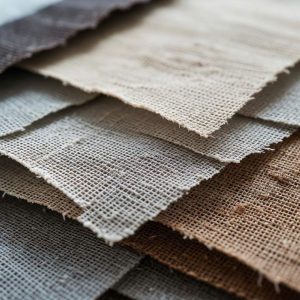 Concrete bridges and road systems rely on strong layers that hold weight, manage pressure, and stay steady through the years. These materials shape our cities, but they also inspire interior spaces that value honesty, texture, and structure. Designers use the same raw qualities to build rooms that feel grounded and modern. The result is a style that connects daily living with the strength found in large scale infrastructure.
Concrete bridges and road systems rely on strong layers that hold weight, manage pressure, and stay steady through the years. These materials shape our cities, but they also inspire interior spaces that value honesty, texture, and structure. Designers use the same raw qualities to build rooms that feel grounded and modern. The result is a style that connects daily living with the strength found in large scale infrastructure.
Homeowners who admire this aesthetic often look for innovative materials that bring a sense of depth and character. This interest grows as more people lean toward open layouts, exposed surfaces, and simple lines. Many find that the patterns and weaves found in geomesh and geotextiles work well inside a home. These textures add subtle rhythm to walls, ceilings, and furniture. They also guide light differently, which helps shape the mood of industrial and minimalist rooms.
Geomesh and Geotextiles as Design Inspiration
Materials used in construction often come with patterns that are both practical and beautiful. Geomesh, for example, has a grid structure that spreads pressure across a surface. This same grid becomes a visual element when designers adapt it as a feature within a living space. Some use it for metal partitions or wall panels. Others adapt the pattern into lighting covers or cabinet fronts.
Geotextiles inspire soft finishes that still feel rugged. Their woven texture lifts plain walls or furniture pieces. When used as a reference for wallpapers, upholstery, or rugs, they add a quiet but strong personality. The geometry also pairs well with concrete, steel, and wood, which are common materials in industrial homes.
How Construction Patterns Shape Interior Mood
Many people choose this style because it feels real and uncluttered. The visible lines, structured shapes, and raw edges create a calm atmosphere. Designers use these qualities in several ways:
- Wall treatments. Textured composites inspired by construction fabrics help break the flatness of plain walls.
- Room dividers. Grids and mesh patterns guide light and define zones without closing the space.
- Furniture accents. Tables, shelves, and chairs often incorporate patterned surfaces that reflect infrastructure design.
- Lighting. Mesh inspired lampshades cast shadows that add dimension to a simple room.
These details encourage balance. They soften the heavy look of metal and concrete with patterns that feel both structured and organic. Designers also combine them with warm wood, soft fabrics, and natural light to keep rooms from feeling too cold.
Reinforced Composites in Interior Applications
Modern homes use reinforced composites in more decorative ways. The layered structure makes them durable, and the repeating pattern gives them a distinct identity. Some homeowners use panels made from these composites for feature walls. Others use them for stair railings or ceiling details. These choices bring depth and shadow into the space.
Though these panels come from industrial uses, they fit surprisingly well in minimalist interiors. They match the clean lines and simple silhouettes. The result is a space that feels cohesive. It honors the material instead of hiding it behind paint or drywall.
Why Industrial Style Continues to Grow
The appeal of this style comes from how it blends toughness and comfort. Many people want a home that feels open and simple. They also like rooms that reflect real world structures. This is why patterns inspired by geomesh and composite grids remain popular. They bring honest texture without overwhelming the space.
Designers also appreciate how flexible these references are. They work in small apartments and large homes. They match neutral palettes or darker schemes. Most of all, they create a visual connection between architecture and everyday living. This link helps tell a story inside the home.
Explore more interior design inspirations from our guide: Why Hiring a Professional Interior Designer with DMC Travel Expertise is a Smart Decision?
Conclusion
Interior design continues to evolve as people draw new ideas from construction technology. The textures and grids found in geomesh, geotextiles, and reinforced composites guide the look of modern industrial rooms. Many homeowners search for materials that match this direction. They look for strength, texture, and subtle pattern. This is why the influence of innovative materials will continue to shape the next generation of interiors. These materials help create a space that feels honest, expressive, and connected to the structures that surround our everyday lives.